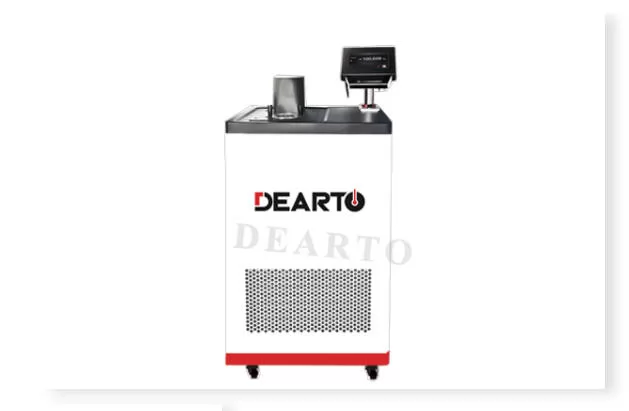-min_1714445972_WNo_1000d563.webp)
In industry and scientific research, maintaining accurate temperature measurements is critical, and a key tool in achieving this accuracy is ultra-low temperature calibration fluid. Even small deviations in temperature parameters during production or research can resultra-low temperaturein significant differences in the final results, which may require costly and time-consuming restarts of experiments or production lines. In order to fully understand ultra-low temperature calibration fluid, I spent a day consulting some professional literature and consulting experts in the industry.
List of Contents |
Introduction
Ultra-low temperature calibration fluid is a special liquid used for precision calibration processes. Unlike standard calibration fluid that operate within the normal temperature range (-60°C -300°C), ultra-low temperature calibration fluid uses special materials to maintain fluidity even at extremely low temperatures (around -100°C). It is worth noting that ultra-low temperature calibration fluid needs to be used with a temperature calibration bath.

Main Components
These fluids usually consist of a mixture of various organic compounds, such as hydrocarbons, silicone oils, or fluorinated compounds, which are selected as raw materials for manufacturing ultra-low temperature calibration fluid due to their low freezing point and resistance to freezing in ultra-low temperature environments.
Working Principle
Ultra-low temperature calibration fluid typically needs to work together with an ultra-low temperature calibrator. The principle is based on a closed aluminum tube, with an internal open concentric tube placed near the bottom, allowing the ultra-low temperature calibration fluid to circulate freely around it. Circulation is achieved by a stirring propeller at the bottom, and the calibration zone is located within the inner tube. Heating power is provided by two different heaters, with a main heater wrapped around the outside of the outer tube and another placed in the space between the cylinders. The main heater acts as a protective heater and provides constant power to keep the outer wall temperature stable just below the set point. The second smaller heater performs adjustments with the assistance of a commercial controller.
_1714446028_WNo_1000d563.webp)
Application
Ultra-low temperature calibration fluid can be used in various fields:
1. Aerospace industry
In the aerospace field, many aircraft, spacecraft and related equipment need to work in extremely low temperature environments. For example, during rocket launch, the liquid fuel tank and oxidizer tank need to be at extremely low temperatures, and ultra-low temperature calibration fluid is required to calibrate their temperature monitoring systems.
2. Low temperature scientific research
Some scientific research fields, such as superconductor research, low-temperature physics, etc., require extremely low-temperature experimental environments. ultra-low temperature calibration fluid can be used to calibrate temperature measurement equipment such as thermometers and thermocouples in these low-temperature experimental systems.
3. Liquefied natural gas industry
The production, storage and transportation of LNG require extremely low temperatures. This is where ultra-low temperature calibration fluid comes in handy: it is used to calibrate temperature sensors, flow meters, etc. on natural gas liquefaction plants.
4. Biomedical industry
Some biomedical research, such as cryopreservation of cells and tissues, requires the use of ultra-low temperature equipment. Ultra-low temperature calibration fluid can be used to calibrate the temperature control devices in these preservation systems.
5. Automotive industry
Testing components under extreme weather conditions, such as evaluating engine performance in freezing temperatures.
6. Electronics industry
Test circuit performance at extreme temperatures, ensure reliable operation of electronic equipment in different temperature ranges.
-min_1714446058_WNo_1000d563.webp)
Features
Non-flammable and chemically inert: ultra-low temperature calibration fluid is safe to handle and do not react with other substances.
Wide operating temperature range: It can operate from -100°C to +70°C, covering a wide temperature range.
High thermal stability and low compressibility: These properties ensure consistent performance during calibration.
Best Practices for Maintenance
-
Always read and follow the user manual and ask for help from the supplier's professional technicians when necessary.
-
Keep away from places with strong air flow and heat sources.
-
Remove frost from gaskets and shelves regularly.
Safety Measures for Use
-
The working environment of ultra-low temperature calibration fluid may be as low as -100 degrees Celsius. It is particularly important to understand some safety regulations and precautions when using it at such low temperatures.
-
Make sure there are no flammable items around the calibration tank and keep the environment clean.
-
Maintain proper ventilation to ensure a fresh working environment.
-
Make sure there is appropriate firefighting equipment nearby.
-
Avoid adding substances to the calibration bath that may cause chemical or physical reactions.
-
Always wear appropriate protective equipment such as gloves, aprons, and masks appropriate for the working temperature.

Conclusion
Ultra-low temperature calibration fluid are an indispensable asset in maintaining the accuracy and reliability of temperature measurement instruments and thermal imaging systems in various industries. The future for these fluids appears promising as technology continues to advance, characterized by increased accuracy, reliability, and adaptability to meet changing temperature calibration needs. For further inquiries or purchasing products related to temperature measurement and calibration, please feel free to contact DEARTO Instruments, a well-known company based in China. Specializing in comprehensive solutions for professional temperature and humidity calibration and measurement, DEARTO Instrument remains committed to pioneering advancements in intelligent temperature and humidity management through an unwavering commitment to innovation and excellence.



